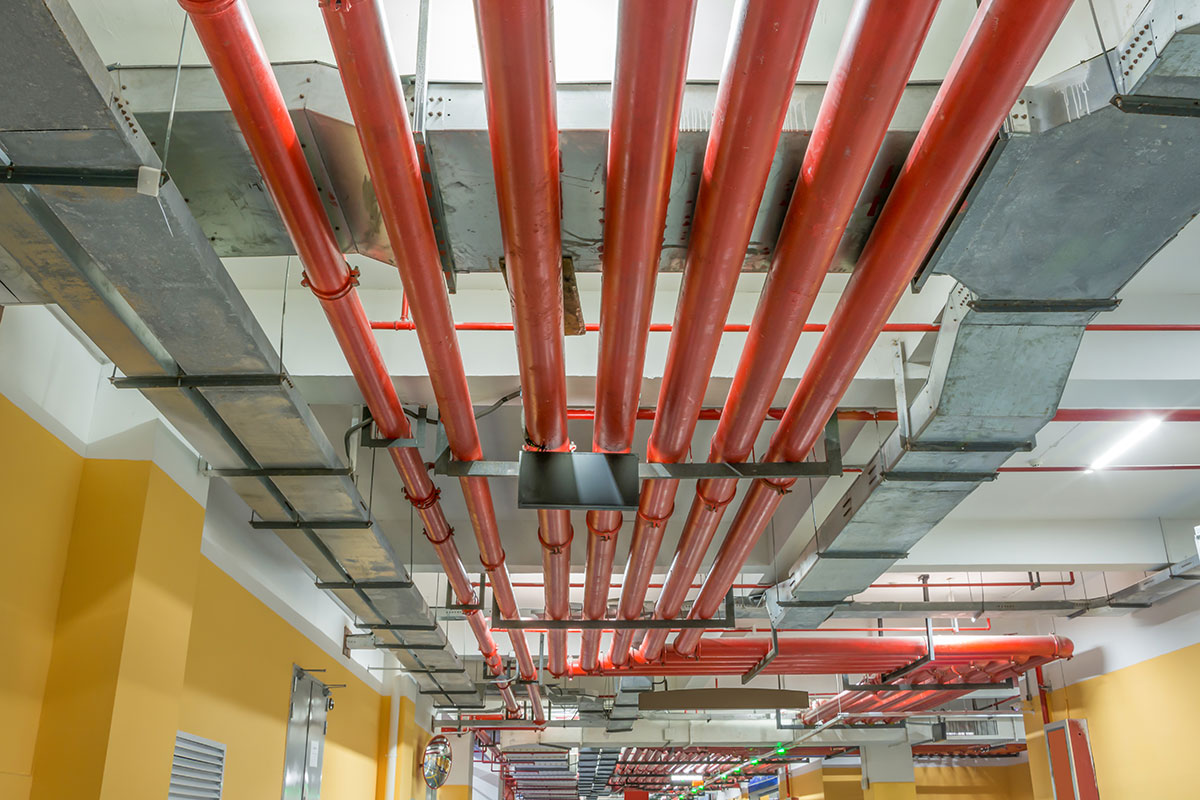We have recently introduced fire protection services here at The CAD Room, as we have completed many MEP projects in the past and so have worked closely with many fire sprinkler contractors. We have frequently found ourselves in a situation where the sprinkler system design has not been created in 3D, meaning we are unable to coordinate our MEP services with it.
In order to solve this issue, we are now offering our fire protection services to fire sprinkler companies which means we can now provide them with a service which allows them to model their sprinklers in 3D. But why are fire sprinklers so important in building design, and how do they work?
How do fire sprinklers work?
Fire sprinklers are a vital part of the MEP services tasks associated with constructing a building, as they are key to protecting the end building from fire. If a fire starts in a building which has fire sprinklers installed, the smoke from the fire will set off any smoke alarms while the heat will activate the sprinkler heads. Sprinkler heads are equipped with glass bulbs which are filled with a glycerin-based liquid which expands with temperature. As the liquid expands it breaks the glass and this activates the sprinkler head. The sprinkler head is attached to a system of water pipes which are typically built into the ceiling or wall. When the glass on the sprinkler head breaks this triggers a valve which releases the water from the pipes.
The time it takes for the water to be released in the sprinkler system depends on the type of fire sprinkler system you choose. There are four main types of fire sprinklers:
#1 Wet Pipe Fire Sprinkler System
This is the most common fire sprinkler system used in construction as it is reliable and simple to maintain. Wet pipe systems store water under pressure directly in the pipes and so can release water as soon as they are triggered.
#2 Dry Pipe Fire Sprinkler System
Dry pipe systems are similar in design to wet pipe systems except the pipes do not contain water, they contain pressurised air or nitrogen. Once the sprinkler is activated a valve is released and the air (or nitrogen) is allowed to escape, allowing the water to flow into the pipes and then out through the sprinkler. This type of system is often used in spaces where freezing is possible, such as warehouses, outside loading docks and commercial freezers.
#3 Pre Action Sprinkler System
In a similar way to the dry pipe system, water is not stored in the pre-action sprinkler system. Pressurised air or nitrogen is kept in the pipes, and the water is kept behind a double interlocking mechanism. Once a fire is detected the valve opens and allows the water to flow through the sprinkler system. The benefit of this mechanism is it not only keeps the water away from the piping, therefore preventing accidental releases, it also monitors the pipes for leaks as well.
#4 Deluge Sprinkler System
You will usually find deluge sprinkler systems in areas which are highly hazardous, such as warehouse bay entries where a fire could rapidly spread. In this type of system, the sprinkler head is permanently open and so is not activated by heat – it is instead activated by a fire alarm which causes the water to release. Once the sprinkler has been activated, it can only be turned off manually.
If you are working on any projects where you feel our service, transforming your design into 3D, may be of use then please don’t hesitate to contact us. We will happily provide any help you need. You can call us on 0161 427 0348 or email us at office@thecadroom.com

